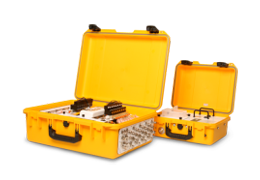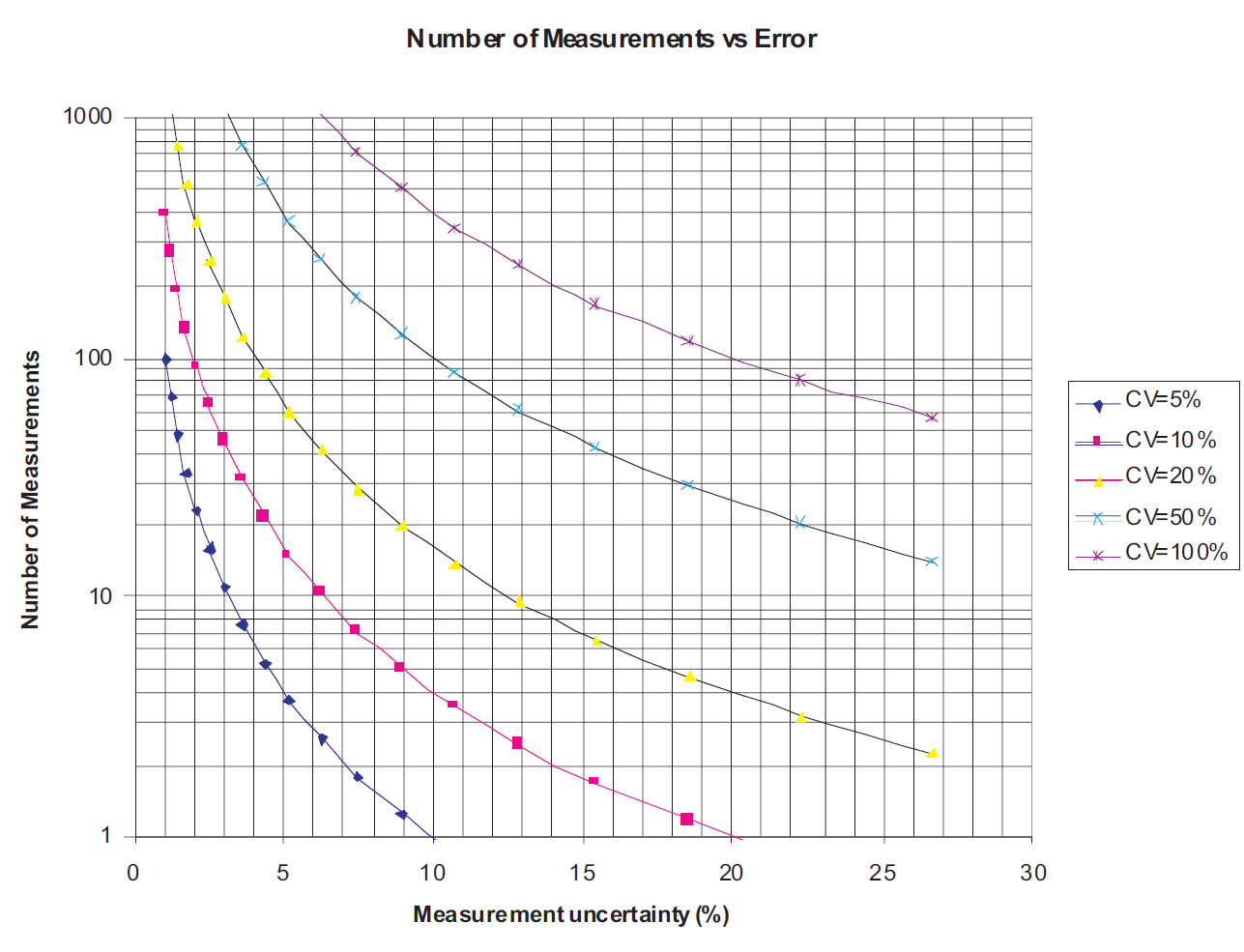Printable PDF: Addressing Spatial Variability: Determining the Number of Readings Required
Instructions for determining the number readings required.
Soils can be highly variable in terms of CO2 flux values. Even at a seemingly uniform site, the soil CO2 flux might range from 2 μmol/m2/s at one location to over 4 μmol/m2/s just a few meters away. To obtain reliable site mean flux values, it is important to determine how many readings might be required so that time and resources can be properly allocated before starting an investigation.
In addition to spatial heterogeneity, soils also exhibit both diurnal and seasonal patterns of variation in CO2 evolution due to changes in soil water content, temperature, soil organic carbon resources, etc. To accurately obtaein site CO2 fluxes, it is often necessary to take readings with adequate spatial as well as temporal resolution. The LI-8100 Automated Soil CO2 Flux System is designed to satisfy both the temporal and spatial resolution requirements of soil CO2 flux monitoring.
When connected to the 8100-101 or 8100-104 Long Term Chamber, the LI-8100 system can take frequent CO2 flux readings automatically at user-defined intervals. When not taking a reading, the chamber moves up and away from the measurement collar. This enables ambient CO2 concentrations to prevail between measurement intervals and also allows the collar area to be fully exposed to elements of wind, rain, sunlight, etc.
When equipped with the LI-8150 Multiplexer, the LI-8100 System is able to control and obtain flux data from up to 16 Long Term Chambers. With either the 10 cm or 20 cm Survey Chamber, the system can be used to rapidly obtain flux readings at many different locations. The Survey Chambers move down over the measurement area to take a flux reading and then move up a short distance to allow ambient CO2 concentrations to be re-established. The survey chambers can also be used for automatic, unattended measurements suitable for intermediate periods. Thus, various user-defined high temporal resolution as well as high spatial resolution monitoring is possible with the LI-8100 System.
The graph below shows the number of samples averaged against the uncertainty of the mean for sites with coefficients of variation (cv) ranging from 5% to 100%. These uncertainties were calculated using standard statistical theory, which is described at the end of this note. Even for a relatively uniform site with a CV of 10% (e.g., a uniform plot suitable for agronomic experiments), as many as 15 flux readings may be required to obtain a mean value with an uncertainty of about 5%. For sites with greater variability, an even larger number of measurements would be required. It is evident from the data shown that for some investigations, even 16 Long Term chambers by themselves will not provide an adequate number of readings to obtain a reliable site mean flux value. To avoid the cost of deploying multiple systems, researchers have suggested augmenting the high temporal resolution of long-term automated chamber readings with survey chamber readings (e.g., Savage and Davidson, 2003; Arnold, et.al, 2006).
It has been observed that for collar locations where soil temperature, soil moisture, etc., track each other during the day, their CO2 fluxes will also show similar diurnal patterns, so that infrequent survey chamber measurements can be used to infer the diurnal CO2 fluxes. This approach enables the investigators to model the effects of rapidly varying environmental factors (solar radiation, air temperature, rainfall, etc.), as well as to obtain reliable whole site mean fluxes.
Determining Sample Size
The standard error, σ y (the standard deviation of a mean) is related to the total population standard deviation, σ, by:
1‑1
where n is the number of measurements in a sample. For a population with normal distribution, there is a 95% probability that the true mean μ, the arithmetic mean of the entire population, lies within the range:
1‑2
where is the sample mean.
Generally, we wish to keep ≤ an acceptable error, as in
1‑3
So
Also the coefficient of variation (CV), is defined as σ/µ
So
References
| 1 | Savage, K. and Davidson, E. A., 2003. A comparison of manual and automated systems for soil CO2 flux measurements: trade-offs between spatial and temporal resolution. Journal of Experimental Botany, 54(384): 891-899. |
| 2 | Arnold, Kira, Jay Ham, Clenton Owensby and Patrick Coyne, 2006. Temporal stability of soil respiration in tallgrass prairie: towards watershed-scale estimates of carbon fluxes. Abstract, ASA-CSSA-SSSA 2006 International Meeting, 231-14. |

